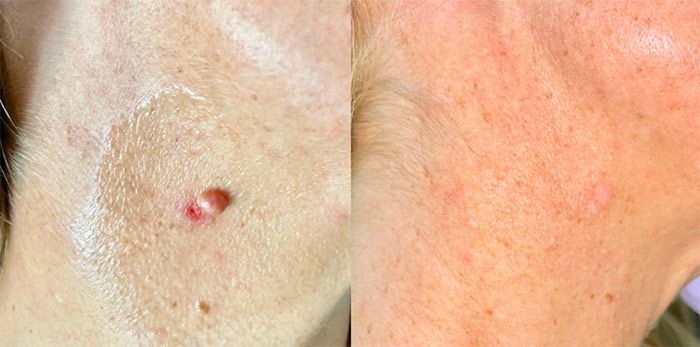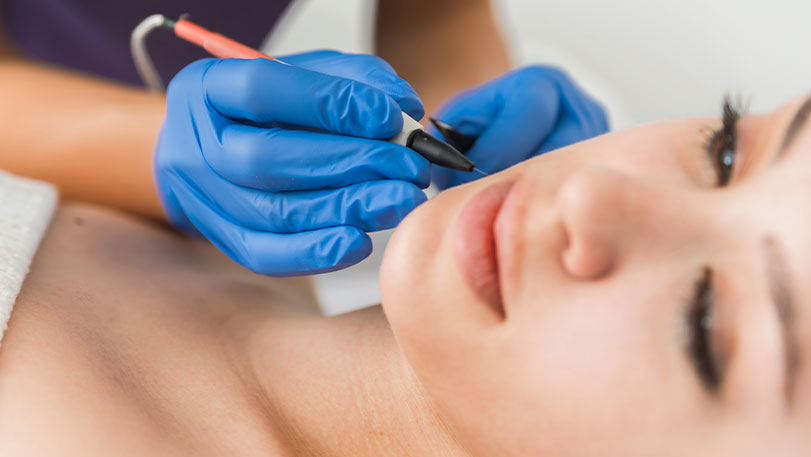Best Practices for Skin Tag Removal Aftercare
 0
0
Posted: Tue March 25 10:55 PM PDT
Business: My Business Name
Skin tags are benign growths that commonly appear on areas of the skin that experience frequent friction, such as the neck, underarms, or eyelids. While Skin tag removal Dubai procedures are generally safe, it’s important to follow proper aftercare practices to ensure optimal healing and minimize the risk of complications. In this guide, we’ll explore the best practices for skin tag removal aftercare, helping you recover quickly and safely.

Understanding Skin Tag Removal
Skin tag removal is a relatively simple procedure that can be done in a variety of ways, including through cryotherapy, cauterization, or surgical excision. While these methods effectively remove the skin tag, the aftercare is just as crucial in ensuring smooth healing and preventing issues like infection or scarring.
After undergoing a skin tag removal procedure, your skin may feel sensitive, irritated, or swollen for a short period of time. Proper aftercare helps in reducing these symptoms and facilitates the natural healing process.
Cleanliness Is Key
One of the most important aspects of aftercare following skin tag removal is cleanliness. Keeping the removal site clean helps reduce the risk of infection and accelerates the healing process. You should gently wash the area with mild soap and lukewarm water. Avoid using harsh chemicals or exfoliating agents, as they can irritate the skin.
After cleaning the site, pat the area dry with a clean towel or a soft cloth. Do not rub the skin, as this may cause irritation. It’s important to keep the area as dry as possible, as moisture can encourage bacteria growth and slow down healing.
Apply Antiseptic
Once the skin tag has been removed, applying an antiseptic solution is recommended to prevent infection. Use a gentle, alcohol-free antiseptic that won’t dry out the skin. Apply the antiseptic to the site using a clean cotton ball or swab. This helps to protect the area while it heals, ensuring that harmful bacteria don't enter the wound.
Avoid applying harsh topical ointments or creams that may clog the pores or irritate the skin. Instead, stick to mild, healing solutions until the skin has fully recovered.
Protect the Area
During the healing process, it’s essential to protect the area from further irritation or injury. This can be especially important if the skin tag was removed in a location prone to rubbing, such as under the arms or around the neck. To protect the skin, avoid wearing tight clothing or jewelry that may come into direct contact with the site.
If the skin tag was removed in a more sensitive area, such as near the eyes, be cautious during everyday activities to avoid accidentally rubbing or scratching the area. Consider covering the site with a clean bandage for the first few days after removal to keep it protected.
Avoid Picking or Scratching
Although the site may itch or feel uncomfortable during the healing process, it’s crucial not to scratch or pick at the area. Picking at the skin can introduce bacteria, leading to infections or delayed healing. Additionally, constant scratching may result in scarring, making the healing process longer and more noticeable.
If you find that the area becomes itchy, try applying a gentle, fragrance-free moisturizer to the skin to relieve the discomfort. Keep your nails trimmed and avoid touching the area unnecessarily to prevent accidental injury.
Limit Sun Exposure
Excessive sun exposure can hinder the healing process and increase the risk of developing pigmentation issues or scars. After skin tag removal, avoid direct sunlight on the affected area, especially during the initial healing phase. If you must go outside, apply a broad-spectrum sunscreen with at least SPF 30 to the area to protect the skin from harmful UV rays.
Consider wearing protective clothing, such as a hat or scarf, to shield the skin from sun exposure until the area has fully healed. Once the healing process is complete, you can gradually reintroduce the area to sunlight but continue using sunscreen to protect the skin in the future.
Be Mindful of Excessive Movement
If the skin tag was removed from an area of the body that experiences frequent movement, like the neck or arms, avoid making excessive movements that may disturb the healing process. Limiting unnecessary stretching, bending, or rubbing of the area can prevent reopening of the wound and allow it to heal properly.
For instance, when applying lotions or washing your face, do so gently without over-stretching the skin. This will ensure that the healing site remains intact and that the skin can heal without interruption.
Stay Hydrated and Maintain a Healthy Diet
Good hydration and nutrition play an important role in your overall healing process. Drinking plenty of water helps maintain skin hydration and supports cell regeneration. Nutrient-rich foods, especially those high in vitamins A and C, can promote faster wound healing and skin repair.
Make sure your diet includes a variety of fruits, vegetables, whole grains, and proteins, as these foods supply essential vitamins and minerals that contribute to the body’s ability to heal. If necessary, consult with a healthcare provider about supplements that can support the healing process, but typically, a balanced diet is sufficient.

Monitor the Area for Signs of Complications
While skin tag removal is generally a safe procedure, it’s essential to monitor the area for any unusual changes that might indicate complications. While rare, signs of infection, such as increased redness, swelling, or pus, may develop after the procedure. If you notice these symptoms, seek professional advice promptly to avoid further complications.
In some cases, the healing process may take longer than expected. If you find that the area doesn’t seem to be healing properly, or if it becomes more painful, reach out to a healthcare professional for guidance.
Conclusion
Following these best practices for Skin tag removal in Dubai aftercare will help ensure a smooth and speedy recovery. By keeping the area clean, avoiding irritation, and protecting the skin, you can minimize the risk of complications and promote optimal healing. With the right care and patience, you’ll soon be able to enjoy clear, healthy skin without the presence of skin tags.
Comments
Please login above to comment.
